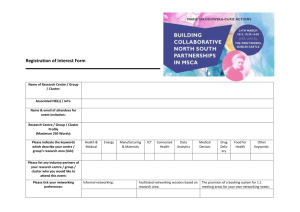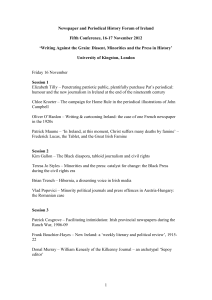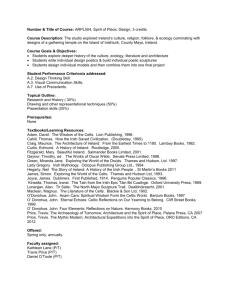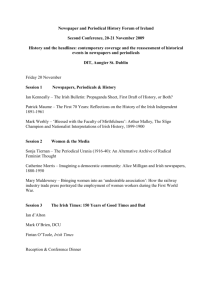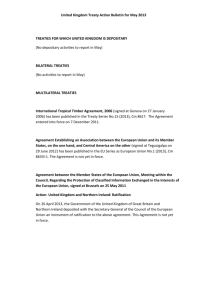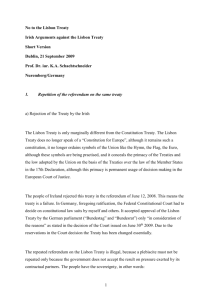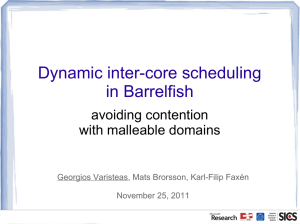Ireland (Grigorakis)
advertisement
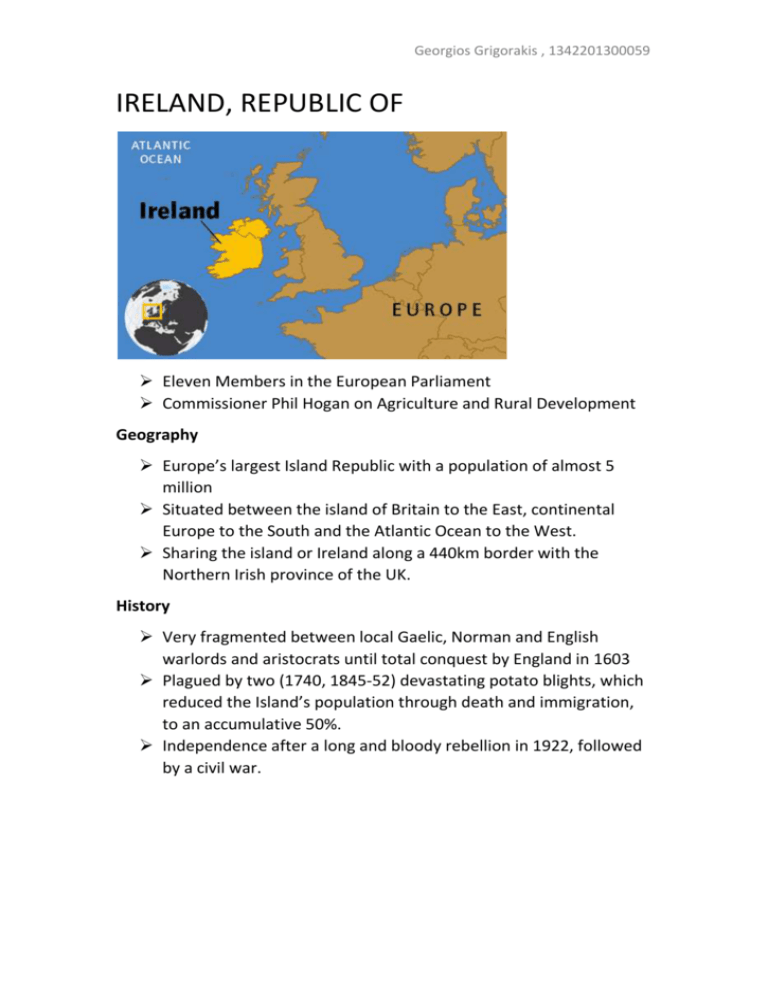
Georgios Grigorakis , 1342201300059 IRELAND, REPUBLIC OF Eleven Members in the European Parliament Commissioner Phil Hogan on Agriculture and Rural Development Geography Europe’s largest Island Republic with a population of almost 5 million Situated between the island of Britain to the East, continental Europe to the South and the Atlantic Ocean to the West. Sharing the island or Ireland along a 440km border with the Northern Irish province of the UK. History Very fragmented between local Gaelic, Norman and English warlords and aristocrats until total conquest by England in 1603 Plagued by two (1740, 1845-52) devastating potato blights, which reduced the Island’s population through death and immigration, to an accumulative 50%. Independence after a long and bloody rebellion in 1922, followed by a civil war. Georgios Grigorakis , 1342201300059 Economy Mostly Agricultural and one of the poorest in Europe until the Industrial Revolution Early Industrialization during the 18th Century- intensive development Since the 1990s, mostly a tertiary sector economy, with 25% of GDP still stemming from industry. Now 11th worldwide in HDI (Human Development Index, 2013) Political System The Republic’s legislative branch is comprised by the Senate and the Dáil (parliament). The supreme figurehead of the state is the President, while the Taoiseach (Prime Minister) is the head of Government. Reasons for entry in 1973 The country made two previous attempts, in 1961 and in 1967, but it was not eager to enter after French rejection of UK’s entry Simultaneous entrance of the UK shatters any doubts, being the leading trade and investment partner of the country until then Lessening of Cold War tensions leading to lower risk of voiding the policy of neutrality by entering the Union Benefits from entry Single Market allows Irish economy to be less dependent to the UK, opens it to foreign investment, especially in the technology and industry sector, mainly from North America and Western Europe. The European Common Agricultural Policy boosts the already significant primary sector production Celtic Tiger: Outstanding GDP growth for 12 consecutive years (1995-2007), to a total of over 70%. The Tiger’s Heart: A flourishing Banking, Financial and High Technology Sector. Georgios Grigorakis , 1342201300059 Financial Crisis (2008-2014) Bank meltdown after the Lehmann Brothers collapse in 2008 due to property bubble which created enormous bank deficits and made a state-funded bail in imperative, thus surging national debt 16th December 2010: Memorandum of Understanding between the country, the European Commission, the European Central Bank and the International Monetary Fund. Total amount: 85 billion Euros of whom 17.5 from the Irish Treasury and the National Pension Reserve Fund. The “Celtic Tiger” booming economy of the ‘00s succumbs to an accumulative 15% depression between 2008 and 2013 and back to a growth of up to 4.6% by 2015. The “Europe’s Silicon Valley”, now home to various technological multinational companies HQ’s in Europe, namely Facebook and Microsoft, among others. Attitude towards the EU Not a member of Schengen Area due to obligatory passport controls in crossings with Northern Ireland. Mostly pro-European public Opinion, 57% were ‘’positive’’ opinion considering the EU, while “negative” stood for 12% (Eurobarometer 2015) Euro-sceptic parties include, but are not limited to, the moderate right-wing Fianna Fáil and the increasingly influential leftistpopulist Sinn Féin, former political wing of the Provisional IRA. NOT a pro-federalist state Refugees and Migrants Ethnically Homogenous until 1990, 10% was foreign-born by 2007. Most were from Poland and the Baltics No significant anti-immigration parties, with “Identity Ireland” being the only such one, formed in early 2015 Georgios Grigorakis , 1342201300059 The country is due to accept up to 4020 refugees as mentioned in the EU quotas British-Irish Relations Significant Approaches after both entered the EU, stemming from the fact that the relation between a Major Power and a former colony was now a relation of two equal member states in it. The approach mentioned above, played a vital role in achieving the Good Friday peace deal in 1998, after a thirty year long, low-scale conflict in Northern Ireland known as “The Troubles” Ireland’s Constitution Amended via referendum, excluding any territorial claims of the Republic at the expense of the North 2011: First visit from a British Monarch since 1911. 2014: First formal Irish Presidential visit to the UK. Policy of Neutrality Neutral since the 1922 Proclamation of the Republic due to no intention of interfering with European matters after the enormous Irish casualties as UK troops in World War 1. Means that Ireland should not join any military alliances (e.g. NATO) or deploy its forces offensively. Thus, the country only provided 120 trainers for the post-Taliban Afghan Army in 2001. Difficult Partner Irish constitution requires referenda for major EU-proposed reforms. Nine of them actualized since entry in the EU (see Appendix). Strict abortion laws due to prevalent Catholic tradition. Regular disagreements with the Commission regarding agricultural policy and very low corporate taxes (12.5% in 2014). Fiscal difficulties in the past, resulting in a multibillion bail out. Georgios Grigorakis , 1342201300059 APPENDIX Irish Referenda related to the EU TOPIC YES NO RESULT Enlargement 1973 83.1% 69.9% 16.91% 30.1% EU Entrance Ratification 31.3% Ratification 38.3% Ratification 53.9% 34.8% turnout, inconclusive Ratification, low turnout (49.5%) Rejection Single European Act 1987 Maastricht Treaty 68.7% 1992 Amsterdam Treaty 61.7% 1998 Treaty of Nice 46.1% 2001 Treaty of Nice 62.9% 2002 Treaty of Lisbon 46.8% 2008 Treaty of Lisbon 67.1% 2009 European Fiscal 60.3% Compact 2012 37.1% 53.2% 32.9% 29.7% Ratification, low turnout (50%) Ratification Seats Allocation in European Parliament Fine Gael (centreright) Fianna Fáil (centre) 4 Labour Party (centreleft) 3 Socialist Party (antiausterity, radical left) 1 Independents 1 3 European People’s Party (EPP) Alliance of Liberals and Democrats for Europe (ALDE) Progressive Alliance of Socialists and Democrats (S&D) European United Left– Nordic Green Left (GUE-NGL) ALDE Georgios Grigorakis , 1342201300059





